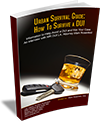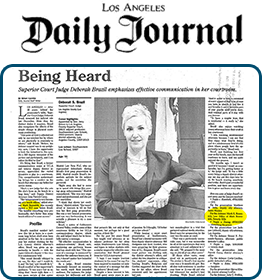Is the Initial Police Stop and Probable Cause for Arrest Valid in This Age Group?
When we’re looking at the 40- to 60-year-old age group we find a lot of confusion as to why the person was actually stopped and why the person actually was arrested. This is because the behavior or what they were doing is not unusual or abnormal.
The person typically has done this behavior, had a few drinks with dinner or gone to a bar and had a couple of drinks, watched a game and drove home. They may have done this activity hundreds if not thousands of times and never had any problems. When we look at the driving, the driving is actually fine.
The police stop is some pretext where the officers are basically creating a reason and it may technically be a violation of the vehicle code, like tinted windows, or it may be that they stopped at a driver’s license DUI check point or something like that. It has nothing to do with how they were driving; it’s just coming into contact with law enforcement.
Many Drivers Are Unaware They Are Not Obligated to Perform the Field Sobriety Tests
Once they come into contact, the officers will usually say that they smelled the odor of alcohol. Well, yes, the person did have something to drink, but that’s not against the law. That’s where the problems really begin because once they smell alcohol the person is asked to get out of the car. They’re subject to field sobriety tests which they don’t have to do but they try to do them because people don’t know that they’re not required.
Often, the Tests Are Not Administered or Evaluated by the Police Properly
People attempt to do the field sobriety test; they do the best they can on the field sobriety tests but the field sobriety tests are really set up for failure. The instructions are very complicated and the officers don’t know how to properly administer or grade the tests.
The field sobriety tests result in people being arrested for driving under the influence when, in fact, they’re driving just fine. That’s why it becomes so important that we look into the chemical testing and the instruments that are used because they can give false information. If somebody has had something to drink, a machine may overstate or understate what the true blood alcohol level is and that can affect whether someone is charged with a DUI or not.
The same thing can happen with blood tests where somebody is given field sobriety tests and does the best they can, but the officer thinks it’s not good enough. Many times, the officers are much younger and holding these drivers to a much higher standard than they should, and they end up getting arrested. Then a blood test is done and we know the blood test is going to come back positive for alcohol because the person admitted they did have something to drink because that’s not against the law. Then we have to look at what happens with the blood testing.
Los Angeles Has Experienced a Number of Problems with Blood and Breath Test Analysis
In Los Angeles County there have been a lot of problems over the years with the blood analysis and results coming in skewed. I’m working on a case right now where we have a breath test result of a 0.07. Less than an hour later there is a blood test that was done and the blood test was a 0.17.
We see a tremendous difference in blood testing versus breath testing and we see a 0.10 variation where somebody is not guilty at the time of driving 0.07 and at 0.17 which is almost fall-down drunk an hour later. That’s not a trustworthy or reliable number. There are errors that occurred in the testing process and we need to be able to bring those errors to the district attorney’s attention.
It’s nice to think that somebody is innocent until proven guilty, but with DUIs, once somebody is arrested, it really is our job to prove where the problems are and why that person is not guilty.






 Personal Attention
Personal Attention Every criminal case is unique and no attorney can guarantee the outcome of a case. The information on this site is legal advertising and for general information only. Using this site, requesting books, information, consultations or communicating with Attorney Rosenfeld through its site does not form an attorney/client relationship.
Every criminal case is unique and no attorney can guarantee the outcome of a case. The information on this site is legal advertising and for general information only. Using this site, requesting books, information, consultations or communicating with Attorney Rosenfeld through its site does not form an attorney/client relationship.








